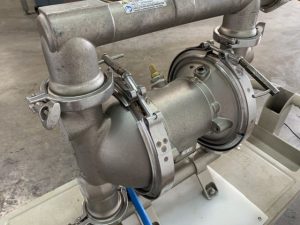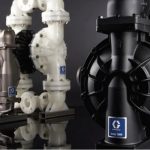Common problems in servicing pneumatic diaphragm pumps and how to fix them
Managers responsible for equipment maintenance know how important it is to ensure that all machinery works properly, in order to guarantee productivity and efficiency within the factory. It is very important to reduce downtime and keep everything running smoothly.
Although they are extremely versatile and reliable equipment, pneumatic diaphragm pumps also need periodic maintenance so that they continue to deliver the same efficiency and reliability. In addition, correct maintenance also helps to extend the life of the bomb, directly contributing to the profitability and financial health of the industry.
When a bomb suffers an unexpected stop, the entire production process can be impacted, causing great damage to the industry. The first step is to identify whether the problem is at the air end (main air valve/pilot valve) or at the wet end (balls, diaphragms, seats). Once the problem is defined, maintenance can begin.
air end
If the problem is determined to be at the air end, service should take place on the pilot valve and main air valve assembly. One of the main causes of problems in these components is the circulation of dirty air. If dirt is observed during disassembly, it may be a sign that a filter is needed.
If there is no dirt in the components, but there is in the fluids, there may be a failure in the diaphragm or its assembly. After cleaning the components, the valve can be reinstalled and the pump can be started again.
To avoid increasing pump downtime, users can keep spare air valves in order to streamline the maintenance process and bring more efficiency to the processes.
In the case of the pilot valve, the need to replace the self-sealing floating pneumatic rings must be analyzed. It is also very important to ensure that all air passages are clean before reinstalling components.
By having a simple design, pneumatic diaphragm pumps allow repairs to be carried out in a simplified way anywhere.
diaphragm failures
One of the main failure indicators in the diaphragm is the output of the pump through the exhaust. When this happens, the pump must be shut down, isolated via suction and discharge valves, and removed from the system. After disassembling and washing the pump, it is necessary to inspect the diaphragm for:
Perforations: check if something blunt has been introduced into the pump and caused a cut or puncture. In this case, a screen filter can be installed in the suction line before the pump.
Scratches: Some higher fluid inlet pressures can end up causing scuff marks on the air inlet of the diaphragm, where it is in contact with the inner chamber of the pump, being more common when the pump is working with flooded suction. When this happens, it is necessary to raise the pump so that the center line is closer to the fluid line, or a back pressure device can be installed to dampen the diaphragms.
Stretched center hole: This problem is caused by an incorrect torque value on the outer diaphragm plate, causing it to back up, or even very high fluid inlet pressures. In this case, it is necessary to adjust to the correct torque values.
Bubbling or Spoiling: These signs indicate a chemical reaction. it is essential to consult a chemical compatibility guide before using your pump.

Always count on Duplacao, your trusted supplier for pneumatic pumps. Get in touch by phone (48) 3438-8484 or email vendas@duplacao.com.br and talk to our experts.










